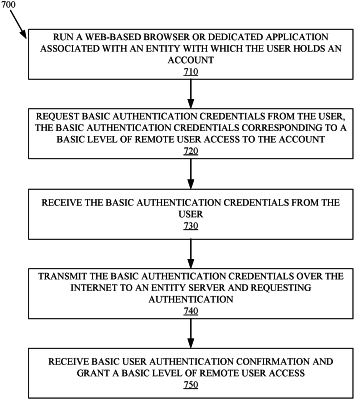| CPC G06F 3/0482 (2013.01) [H04L 65/403 (2013.01)] | 17 Claims |

|
1. A user device for displaying a graphical user interface comprising a floating interactive box using machine learning for quick-reference to resources for a web-based portal or dedicated application on the user device, the user device comprising:
at least one processor;
a communication interface communicatively coupled to the at least one processor; and
a memory device storing executable code that, when executed, causes the processor to:
in response to receiving instructions from a back-end server system, initiate display of the graphical user interface comprising the floating interactive box comprising an interaction between a user of the user device and at least one live entity associate;
transmit data during the interaction to the back-end server system, where the interaction is an ongoing interaction between the user and the at least one live entity associate, and based thereon the back-end server system determines that a lack of access to necessary resources that include information about a topic being discussed during the interaction is inhibiting efficient resolution of the interaction;
wherein the back-end server system uses a machine learning algorithm to process the data and based thereon predicts that resolution of the interaction is likely to become more efficient by providing access to at least one resource that includes the information about the topic being discussed during the interaction, the predicting including comparing an existing efficiency of the interaction with an expected efficiency realizable by providing access to the at least one resource;
in response to receiving additional instructions from the back-end server system, display, over the floating interactive box of the interaction between the user and the at least one live entity associate and during the ongoing interaction, an interactive component enabling access, upon receiving authentication information of the user via the user device based on the topic being discussed during the interaction, to the at least one resource predicted by the machine learning algorithm to more efficiently resolve the ongoing interaction between the user and the at least one live entity associate;
receive confirmation from the user that enabling access to the at least one resource led to resolution of the interaction and transmit the confirmation to the back-end server system; and
upon resolution of the interaction and in response to receiving completion instructions from the back-end server system, end display of the floating interactive box;
wherein the authentication information includes one of a first set of authentication information that includes a basic level of authentication information and a second set of authentication information that includes an elevated level of authentication information, and wherein execution of the executable code further causes the processor to determine from the topic being discussed during the interaction whether the second set of authentication information is needed to enable the access.
|